As a veteran professional, considered to have expertise in education and social science, I am often asked for advice. The requests run the gamut from where to study, to what to study, to how to succeed in one or another competitive arena. I do my best to be helpful—which often includes the admission that I don’t know enough to offer help.
Among the areas for which my professional judgment is most often sought is the letter of recommendation. I am asked to write a variety of letters. These range from recommending a young person for admission to a secondary school or college to recommending a senior colleague for a prize or a month long residency at a picturesque conference site. In the former case, I’m buoyed by the knowledge that there are many good places where the candidate can study. In the latter case, there is often already a lot of public knowledge about the candidate and so my support is probably symbolic rather than substantive.
The most challenging letters: those requested by young scholars who are applying for full-time tenure track teaching jobs. (Sometimes I have been the chief doctoral adviser for the scholar; at other times, I am one of her teachers or on her dissertation committee.) These jobs are highly competitive, with dozens or even hundreds of qualified candidates for each coveted position. Not infrequently, I (as well as other colleagues) will be asked to write letters for more than one candidate for the same job!
I am always suspicious of claims that “things used to be easier” or “more straightforward” in the past—and in reading C. P. Snow’s novels about academe in England, I learned that intrigue has always hovered over coveted appointments. But things certainly used to be different.
In the first half of the 20th century, nearly all appointments at selective institution (in the United States, United Kingdom, and other countries) came about through personal recommendations—in writing, in person, or by phone. The operating principle was the “old boys’ network”—and literally boys, since almost no “girls” were part of the network. When there was an opening at an institution, or when a senior scholar had a promising student, relevant “old boys” would get in touch with one another and have a presumably frank discussion of strengths and weaknesses. (Having read some correspondence from that era, I have been impressed by how candid the letters were—critiques were at least as prominent as raves.) In that sense, one can say that these recommendations were truthful.
But it’s equally important to point out that scholars had their favorites—and having a candidate who carried on your work or agreed with your view of the field or was personally helpful to you were undoubtedly fingers on the scale of a positive recommendation.
The “old boys’ network” needed to be exploded, and in the last several decades, it clearly has been. To begin with, while sexism has hardly disappeared, the range and variety of candidates is much greater, with women and minorities at least in the pool even when there has not been special encouragement for their candidacy. All jobs must be publicly advertised. Further, in many places there are “sunshine” rules, such that either letters are made public or—more typically—the letter writer is warned that confidentiality cannot be guaranteed.
Efforts have been undertaken to make such letters more objective. One ploy is to ask the letter writer to compare the candidate to other candidates in her cohort—either others who are explicitly named or ones whom the writer himself is asked to nominate. Another ploy, common for admission to a highly competitive program, is to ask the letter writer to rate the candidate in terms of her percentile rank with respect to properties like originality, expression in writing, oral expression, etc. An example: “In oral expression, as compared to other candidates, is this candidate in the upper 1%, the upper 5% the upper 10%, etc.?”
A complicating factor—especially salient in the United States—is what I’d term “letter inflation.” We are all familiar with grade inflation—the tendency over the decades to give students ever higher grades (in many institutions of higher learning, the Gentleman C has been promoted the Gentleman A minus). With respect to letters, I’ve observed the same trend in the United States—letters often compete with one another for superlatives. Indeed, of the many letter writers whom I know personally or “on paper,” only one of them is relatively candid about the flaws in a candidate.
So, in the light of all of these obstacles, what is left, if anything, of professional judgment? Faced with other letters that are likely to be laden with superlatives, as well as the prospect of public exposure of critical remarks (not to mention the possibility of a lawsuit filed by an unsuccessful job candidate!), are there any principles to which a letter writer should adhere in order to convey his or her professional judgment in a reliable way?
Here is what I would recommend:
1. When asked by a job candidate for a letter of recommendation, be prepared to say “no” and to give reasons that are candid, though not, of course, gratuitously nasty. I often explain that I don’t know the candidate well enough to be helpful or that I have already agreed to write for someone else or that I don’t think that the candidate is appropriate for the job. Better to be tough at the beginning than to find yourself in a quagmire.
2. Refuse to do rank orderings or checklists. Here’s the standard boilerplate that I use: “As a matter of personal policy, I do not complete ratings questionnaires as a portion of recommendations.” Why this refusal? One almost never sees checklists that are not completely skewed to the positive—so much so that checking off “Top 10%,” rather than “Top 1%,” can be the kiss of death.
3. Be purely descriptive whenever possible. For example, when it comes to a discussion of the candidate’s research, put it in your own words and be explicit about its contribution as well as its limitations.
4. State in a positive way the candidate’s strong features—letter readers will be interested in how you see her strengths.
5. If possible, touch on the candidate’s less strong features—or indicate areas where you don’t feel competent to comment (for example, if you know the candidate’s research but not her teaching, it is fine to state that).
If, for whatever reason, you cannot be explicit about a candidate’s weaknesses, be silent. Leave it to the readers of the letter to make inferences about what is not discussed. To avoid unintentionally harming the candidate, I always have a last line that reads, “Please let me know if I can provide any further information.” If there is indeed a follow-up, you are free to say, “I am not comfortable commenting on that issue.” Don’t lie!
As you can probably tell, this state of affairs does not please me. I’d much rather be completely candid and have others be equally candid with me. (In that sense, despite its obvious flaws, I have sympathy for the normative behavior in earlier times.) But that is not the world in which we live, and it is unfair to treat a job candidate in a way that unfairly jeopardizes her chance for a livelihood. But I come to the reluctant conclusion that, at least in the United States, letters of recommendation are not a site where one can expect candid professional judgment.
Since these issues will not go away, and they affect likely all who would read this piece, I’d be eager to hear others’ ideas about the professional judgment involved in letters of recommendation and how to exercise one’s professional judgment in a responsible way. Feel free to write your own recommendations below!




